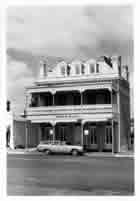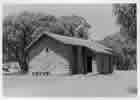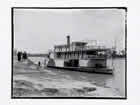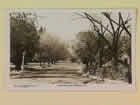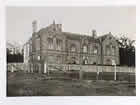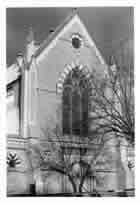In 1851 fabulous gold finds were made at Forest Creek. This grew to be the Mount Alexander goldfield, the first in the region and the richest in shallow alluvial gold. Castlemaine became the town for this goldfield and survived the decline of mining by developing other industries and becoming a market centre. The Imperial Hotel built in 1861 was a startling declaration of Castlemaine’s optimism. The building, unlike any other country pub, evokes Parisian opulence.
Bendigo was built on gold – not just through its gold wealth but literally on top of it. The quartz reefs at Bendigo were extraordinarily rich and concentrated in the area. No other place in the country has matched its yield from quartz mining and all this from mines within the city’s boundaries. The busy Government camp set up in 1852 on Camp Hill provided a nucleus for the town centre. By the 1860s the camp began its transformation into a park inspired by Shakespeare: Rosalind Park.
Bendigo, like other gold towns, attracted people of many nationalities and religious beliefs. Wesleyan Methodists with their flexible organisation were particularly successful in brining their denomination to the goldfields. The Wesleyan (Uniting) Church at Long Gully shows the richness of gold influences. Designed by German-born architects Vahland and Getzschmann, the church was built in the heart of the Cornish community and reflects Wesleyan traditions.
Maldon was the third major alluvial field of the region and later became an important quartz-mining centre. It was here that the Cornish system of tributing became common practice. Miners worked together in tribute gangs to work an unproductive mine on the promise of a commission from the mine owners when a rich quartz vein was found. The miners who worked in this way were receptive to cooperative ventures. Brooks Store opened in 1866 as the Maldon Cooperative Trading Company.
Established towns like Kilmore and Kyneton quickly became important service centres to nearby goldfields. The Kilmore Hospital is one of a group of early district hospitals. Kilmore had declined slightly by the 1870s as the gold ran out on the McIvor diggings. These diggings ensured the development of Heathcote as a township. Its Powder Magazine, built in 1864, features beautifully worked local stone.
Further north, goldfields sprag up at places like Rushworth, Inglewood and Tarnagulla. The gold was not as rich or as consistent as Bendigo and Maldon. Selectors taking up land from the 1870s onwards saved such places from becoming ghost towns. The Victoria Hotel and Theatre of 1861-62, now known as the Tarnagulla Public Hall, is a remnant from the town’s heyday.
In the early 1850s Echuca was a small settlement along the Murray River. Suddenly the booming Bendigo population created a huge market for beef and mutton. Canny dealers seized the opportunity to bring Riverina stock across the Murray River to feed the hungry diggers. Echuca’s heyday as a river port began. The Paddle Steamer Gem, now at Swan Hill Pioneer Settlement, is a reminder of the rich Murray River steam boat era.
This text is reproduced from the publication, 'A Golden Heritage: Victoria 150' (2001) with the kind permission of Heritage Victoria
